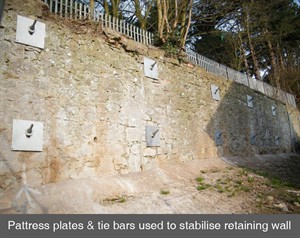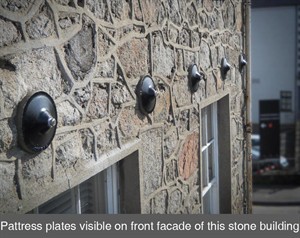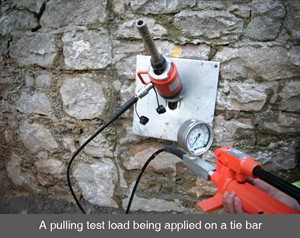Tie Bars & Pattress Plates
 Often buildings and structures require
structural repairs due to cracks in walls and masonry, caused by
an assortment of problems (structural movement, additional loading
& insufficient support). Cracks in walls can be
insignificant, or they can have a serious detrimental effect on
your building or structure; it is therefore important to contact a
specialist who can assess and provide a solution, if necessary.
Often buildings and structures require
structural repairs due to cracks in walls and masonry, caused by
an assortment of problems (structural movement, additional loading
& insufficient support). Cracks in walls can be
insignificant, or they can have a serious detrimental effect on
your building or structure; it is therefore important to contact a
specialist who can assess and provide a solution, if necessary.
Conventional means of reinforcing a structure is by tie bars and
pattress plates; Stronghold Preservation are also registered
installers of Cintec socked anchors, a more
innovative and discreet option which may be suitable for your
project.
However, pattress plates are an effective option, especially
where visibility of intervention is unimportant (bridges,
engineering projects, stone walls etc). Stronghold
Preservation have been involved in a number of pattress plates
& tie bar projects;
Castle Street, Newry
The engineer specified a combination of Cintec anchors (where
pattress plates were not suitable), and traditional pattress plates
which are clearly visible externally on this stone building.
Stronghold Preservation initially monitored the cracks to determine
if the movement was active, before diamond drilling and installing
the tie bars, pattress plates and Cintec anchors.
St Patricks Grammar School, Armagh
The masonry rubble retaining wall was found to be structurally
inadequate for its intended use, and was becoming
increasingly unstable. Stronghold Preservation worked with
the structural engineer to help design a solution to ensure
structural stability. A test anchor was installed by
Stronghold Preservation, and a nominal load applied to determine
the bond strength. The initial test load was used by the
engineer to inform the current design solution.